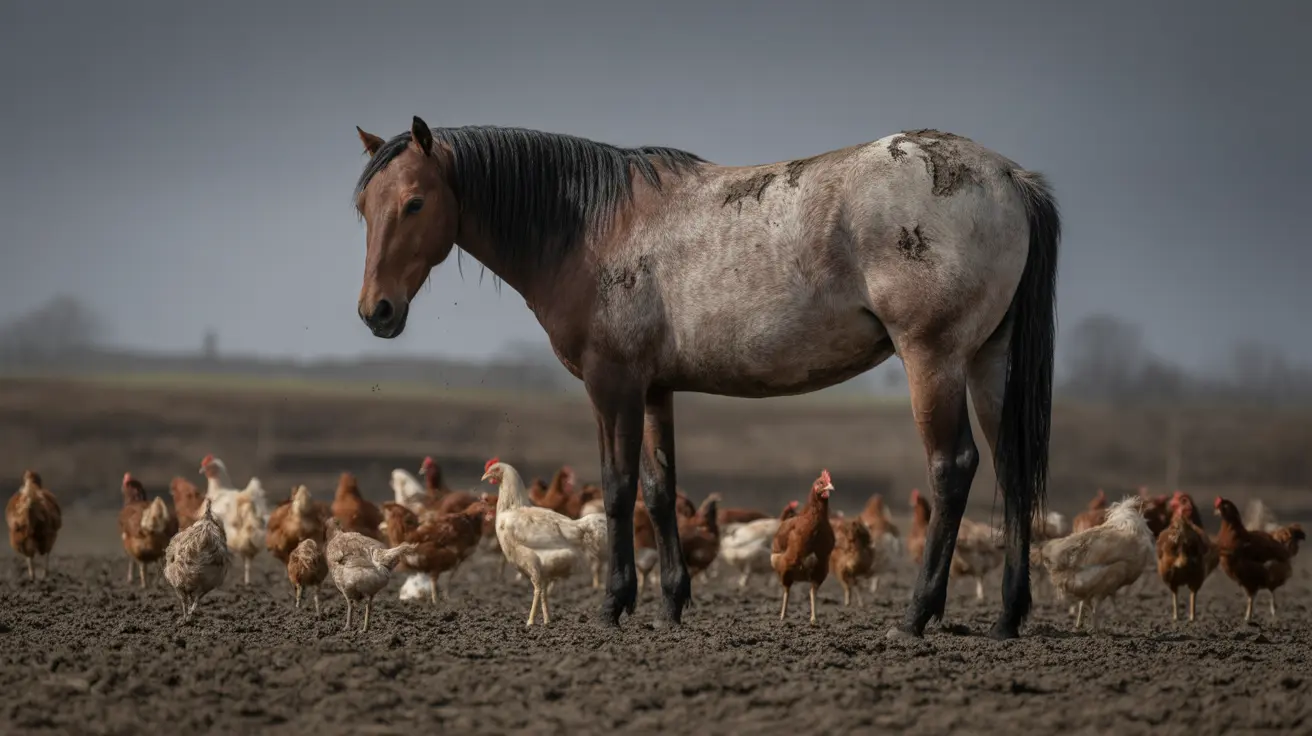The Historical Legacy of Tobacco Animal Testing
The 1975 "Smoking Beagles" Scandal
The exposure of cruel tobacco experiments reached a turning point in the 1970s when journalists revealed horrific studies involving beagle dogs forced to inhale cigarette smoke. These experiments, which involved attaching tubes to holes in dogs' necks or strapping masks to their faces to force smoke into their lungs, sparked widespread public outrage that continues to resonate today. The images and stories of these suffering animals became powerful symbols of the tobacco industry's willingness to inflict pain on innocent creatures in pursuit of profit and product development.
This watershed moment not only galvanized animal rights advocates but also brought unprecedented scrutiny to the tobacco industry's research practices. The public outcry following these revelations marked the beginning of a broader conversation about the ethics of animal testing in tobacco research and laid the groundwork for future regulatory changes and public awareness campaigns.
Evolution of Animal Testing Methods
While the most graphic experiments of the past may have been curtailed, animal testing in tobacco research has evolved rather than disappeared entirely. In the past, experimenters applied cigarette tar directly to mice and rats' bare skin to induce the growth of skin tumors, while monkeys and dogs were subjected to forced smoke inhalation through various mechanical devices. Today's methods may appear more "refined," but they continue to cause significant animal suffering.
Current Animal Testing Practices in Tobacco Research
Modern Experimental Methods
Contemporary animal testing in tobacco research primarily employs two main exposure methods, both designed to force animals to inhale tobacco smoke or e-cigarette vapors against their natural instincts. The whole-body exposure method involves sealing rats in small canisters where they are forced to breathe cigarette smoke or vapors from electronic cigarettes for up to six hours straight, every day, for periods extending up to two years. This prolonged exposure causes visible distress as animals attempt to avoid inhaling the toxic substances.
The second method, nose-only exposure, is considered even more restrictive and stressful. In this approach, animals are restrained in tubes with only their noses exposed to smoke chambers, preventing any possibility of escape from the toxic environment. Both methods demonstrate the animals' instinctive attempts to avoid smoke inhalation, highlighting the unnatural and distressing nature of these experiments.
Species Used and Testing Scope
Modern tobacco research continues to rely heavily on rats and mice, though the scope has expanded to include testing of new tobacco products like e-cigarettes. Syrian golden hamsters are frequently used in carcinogenicity studies due to their low spontaneous tumor rates, while various other species including guinea pigs, rabbits, and even cats, dogs, and primates have been subjected to tobacco-related experiments. The exact number of animals used remains largely opaque due to a significant lack of transparency in reporting these figures across the industry.
More than 50 million animals are estimated to be used in experiments annually in the United States alone, with tobacco research representing a substantial portion of this figure. Notably, mice and rats bred specifically for research are not counted in USDA statistics and receive minimal legal protections, making the true scope of animal suffering in tobacco research difficult to quantify.
Scientific Limitations and Ethical Concerns
Biological Differences Undermine Relevance
The fundamental flaw in animal testing for tobacco research lies in the significant biological differences between animals and humans. Rats breathe faster than humans and only through their noses, whereas humans can breathe through both nose and mouth. Additionally, rats live close to the ground, and their nasal passages are more effective at filtering inhaled air. These physiological differences, combined with distinct cellular structures in rat versus human lungs, affect how toxins are processed and their ultimate impact on health outcomes.
Different animals demonstrate varying reactions to the same toxins, and laboratory animals are not exposed to cigarette smoke or e-vapors in the same manner or time frame as human smokers. These factors combine to make animal tests poor predictors of results in humans, fundamentally undermining the scientific justification for continued animal suffering in tobacco research.
The Suffering Factor
Animals in tobacco experiments endure considerable suffering throughout the testing process. Beyond the immediate distress of forced smoke inhalation, many animals develop visible health problems, tumors, and organ damage during prolonged studies. The psychological stress of confinement, restraint, and repeated exposure to noxious substances compounds the physical harm. Most animals are killed at the conclusion of experiments, with adoption or retirement being exceptionally rare occurrences.
The ethical implications extend beyond individual animal welfare to broader questions about humanity's relationship with other species and our moral obligations to prevent unnecessary suffering, particularly when the scientific benefits remain questionable.
Global Regulatory Landscape and Legal Frameworks
Countries Leading the Ban Movement
Several European nations have taken decisive action against animal testing for tobacco products. Belgium, Estonia, Germany, Slovakia, and the United Kingdom have implemented comprehensive bans on tobacco product development and testing using animals. Germany's prohibition specifically targets product development while still permitting basic research, illustrating the nuanced approaches different countries take to regulating this practice.
These legislative victories represent significant progress for animal welfare advocates and demonstrate that viable alternatives to animal testing exist and can be successfully implemented without compromising public health protection or scientific advancement.
United States Regulatory Approach
In contrast to European leadership, U.S. law does not include outright requirements for toxicity testing of tobacco products or their ingredients on animals. However, the regulatory framework creates indirect pressure for animal testing. Manufacturers must demonstrate to the U.S. Food and Drug Administration's Center for Tobacco Products (CTP) that new products are equally or less toxic than conventional cigarettes, and while companies can choose their testing methods, the CTP may reject applications without animal test data and suggest animal testing to facilitate market approval.
Since the FDA gained tobacco regulatory authority in 2009 through the Family Smoking Prevention and Tobacco Control Act, the landscape has become more complex. While the agency officially encourages alternatives to animal testing and applies the 3Rs principle (replace, reduce, refine), animal experiments to study smoking-related diseases remain common, especially at universities and research institutions.
International Framework and Oversight Gaps
The World Health Organization Framework Convention on Tobacco Control, ratified by over 170 countries, has increased focus on scientific studies of tobacco's effects, inadvertently creating demand for more animal research. This international framework, while aimed at reducing tobacco harm, has not adequately addressed the animal welfare implications of research methods used to inform policy decisions.
A significant challenge in global regulation is the practice of tobacco companies outsourcing animal testing to countries with less stringent animal welfare laws. This regulatory arbitrage allows companies to circumvent restrictions in their home countries while still conducting animal experiments to support product development and marketing claims.
Scientific Alternatives and Technological Advances
Non-Animal Testing Methods
The development of sophisticated alternatives to animal testing has accelerated dramatically in recent years, offering scientifically superior and more humane approaches to tobacco research. Companies can now use computer modeling and human cell-based methods that provide more accurate predictions of human health outcomes than animal studies. Three-dimensional tissue models of the human respiratory tract, formed from cells of donors of different ages, sexes, races, and health conditions, offer unprecedented insights into how tobacco products affect human biology.
These advanced methods not only eliminate animal suffering but also provide more relevant data for human health assessment. Human epidemiological and clinical studies, combined with in-vitro testing using human tissues, offer direct insights into tobacco's effects on human physiology without the species translation problems inherent in animal studies.
Organ-on-a-Chip Technology
Organ-on-a-chip systems represent a revolutionary advancement in toxicological assessment. These microfluidic devices contain living human tissues or organ substructures that mimic human organs in laboratory conditions, providing dynamic biological modeling that surpasses traditional cell cultures and animal studies. The technology offers superior disease modeling and toxicological assessment while using human-relevant biology.
Philip Morris International and other companies have begun integrating organ-on-a-chip technologies as part of comprehensive approaches to replace, reduce, and refine animal testing. Examples include 3D vasculature-on-a-chip models and lung/liver-on-a-chip platforms that can assess tobacco heating system impacts with unprecedented accuracy and human relevance.
Challenges in Adoption
Despite the superior scientific value of alternative methods, adoption remains slow due to regulatory conservatism and industry inertia. An international workshop on organ-on-a-chip technology identified key obstacles including slow regulatory acceptance and insufficient communication about the benefits of alternative methods. Experts recommend improving data sharing, developing regulatory guidance, and establishing qualification centers to accelerate the transition away from animal testing.
Industry Practices and Consumer Awareness
Tobacco Company Policies
The tobacco industry's relationship with animal testing reveals a complex web of public relations, scientific claims, and regulatory compliance. Historically, tobacco companies used animal testing strategically to cast doubt on smoking's health effects, conducting studies designed to minimize apparent harm or highlight species differences that could be used to question human health risks. These practices contributed to decades of public health misinformation and delayed appropriate regulatory responses.
Some tobacco companies have now committed to banning animal testing unless specifically required by regulations, responding to consumer pressure and advocacy campaigns. However, the lack of standardized certification systems means consumers have no reliable way to determine whether tobacco products were developed using animal testing, limiting the effectiveness of market-based pressure for change.
Transparency and Accountability Issues
A significant problem in addressing animal testing in tobacco research is the lack of transparency regarding the number and species of animals used in tobacco-related experiments. Unlike pharmaceutical research, where animal testing data must be reported to regulatory agencies, much tobacco research occurs in academic settings or private laboratories with minimal oversight or public disclosure requirements.
This opacity makes it difficult for consumers, advocates, and policymakers to understand the true scope of animal suffering in tobacco research and limits the effectiveness of advocacy efforts aimed at reducing or eliminating these practices.
The Role of Advocacy and Journalism
Investigative Reporting Impact
Investigative journalism continues to play a crucial role in exposing animal testing practices in tobacco research, building on the legacy of the reporters who first revealed the "smoking beagles" experiments. Modern investigative efforts focus on uncovering industry practices, regulatory gaps, and the continued use of animals in tobacco research despite available alternatives.
These journalistic efforts provide essential transparency, educate the public about ongoing issues, and create pressure for policy changes and industry reform. The power of visual documentation and compelling storytelling remains a key tool in building public support for ending animal testing in tobacco research.
Animal Rights Organizations
Organizations like PETA have been instrumental in funding the development of non-animal testing methods and advocating for regulatory changes to eliminate animal testing requirements. These groups work on multiple fronts, from scientific research funding to legislative advocacy to corporate engagement, creating comprehensive pressure for change across the tobacco research ecosystem.
Animal rights organizations also play a crucial role in monitoring industry practices, filing regulatory comments, and maintaining public awareness about ongoing animal testing practices that might otherwise remain hidden from public view.
Taking Action: How Individuals Can Make a Difference
Supporting Legislative Change
Individual advocates can support legislative efforts to ban animal testing for tobacco products by contacting elected representatives, supporting ballot initiatives, and participating in public comment periods for relevant regulations. The success of European bans demonstrates that legislative solutions are achievable when public support is mobilized effectively.
Advocacy efforts should focus on both expanding existing bans to cover all forms of tobacco research and supporting legislation that mandates the use of alternative testing methods where animal testing is not specifically required by law.
Consumer Choices and Corporate Pressure
While the lack of standardized certification systems limits direct consumer action, individuals can research tobacco companies' policies on animal testing and support companies that have made firm commitments to eliminate animal testing from their research and development processes. Consumer pressure, combined with shareholder advocacy, can influence corporate policies and accelerate industry-wide changes.
Supporting the development and validation of alternative testing methods through donations to research organizations and advocacy groups helps build the scientific foundation necessary for regulatory acceptance of non-animal methods.
Educational Outreach
Public education about the continued use of animal testing in tobacco research remains crucial, as many people assume these practices ended decades ago following the public outcry over the "smoking beagles." Sharing information about current practices, available alternatives, and opportunities for advocacy helps build the informed public support necessary for meaningful change.
Frequently Asked Questions
Is animal testing for tobacco products still legal in the United States?
Yes, animal testing for tobacco products remains legal in the United States, though it is not explicitly required by federal law. The FDA's Center for Tobacco Products may suggest animal testing for product approval, and many research institutions continue to conduct animal studies related to tobacco and smoking-related diseases.
Which countries have banned animal testing for tobacco products?
Belgium, Estonia, Germany, Slovakia, and the United Kingdom have implemented bans on animal testing for tobacco product development. Germany's ban specifically targets product development while still allowing basic research using animals.
Are there effective alternatives to animal testing in tobacco research?
Yes, numerous scientifically superior alternatives exist, including computer modeling, human cell-based methods, three-dimensional tissue models of human respiratory systems, and organ-on-a-chip technology. These methods provide more accurate predictions of human health outcomes while eliminating animal suffering.
How many animals are used in tobacco research annually?
The exact number is unknown due to lack of transparency in reporting, but it represents a portion of the estimated 50 million animals used in experiments annually in the United States. Mice and rats, the most commonly used species, are not counted in USDA statistics, making precise figures difficult to determine.
What happens to animals after tobacco testing experiments?
Most animals are killed at the conclusion of tobacco testing experiments. Adoption or retirement is extremely rare, with only a few states having laws requiring shelters to accept dogs and cats used in laboratory research.
Can consumers identify tobacco products developed without animal testing?
No standardized certification system exists to inform consumers about animal testing practices in tobacco product development. Some companies have made public commitments to avoid animal testing, but consumers must research individual company policies to make informed choices.
Why do rats and mice receive fewer protections in research?
Mice and rats bred specifically for research are excluded from USDA animal welfare statistics and receive minimal legal protections under the Animal Welfare Act. This exclusion exists despite these species comprising the vast majority of animals used in research, including tobacco studies.
Conclusion
The continued use of animal testing in tobacco research represents an outdated and ethically problematic approach that causes immense animal suffering while providing limited scientific value for human health protection. Despite decades of public outcry dating back to the "smoking beagles" scandal, millions of animals continue to be subjected to forced smoke inhalation and related experiments that poorly predict human health outcomes.
The path forward is clear: superior scientific alternatives exist, several countries have successfully implemented bans, and public support for ending animal testing in tobacco research continues to grow. Through continued advocacy, legislative pressure, consumer awareness, and support for alternative testing methods, we can work toward a future where tobacco research relies on human-relevant science rather than animal suffering. The question is not whether change is possible, but whether society will demand it quickly enough to spare countless animals from unnecessary harm.






